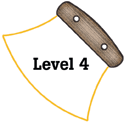
Alaska Science
Key Element B6
 |
Alaska Science |
|
Performance Standard Level 4, Ages 15–18
|
|
|
|
Sample Assessment Ideas
|
Standards Cross-References
|
||
|
National Science Education Standards Hazards and the potential for accidents exist. Regardless of the environment, the possibility of injury, illness, disability, or death may be present. Humans have a variety of mechanisms—sensory, motor, emotional, social, and technological—that can reduce and modify hazards. (Page 197) Natural and human-induced hazards present the need for humans to assess potential danger and risk. Many changes in the environment designed by humans bring benefits to society, as well as cause risks. Students should understand the costs and trade-offs of various hazards ranging from those with minor risk to a few people to major catastrophes with major risk to many people. The scale of events and the accuracy with which scientists and engineers can (and cannot) predict events are important considerations. (Page 199) |
Benchmarks Benefits and costs of proposed choices include consequences that are long-term as well as short-term, and indirect as well as direct. The more remote the consequences of a personal or social decision, the harder it usually is to take them into account in considering alternatives. But benefits and costs may be difficult to estimate. (Page 166) Social trade-offs are often generational. The costs of benefits received by one generation may fall on subsequent generations. Also, the cost of a social trade-off is sometimes borne by one generation although the benefits are enjoyed by their descendants. (Page 166) |
|
Table of Contents | Return to Alaska Native Knowledge Network